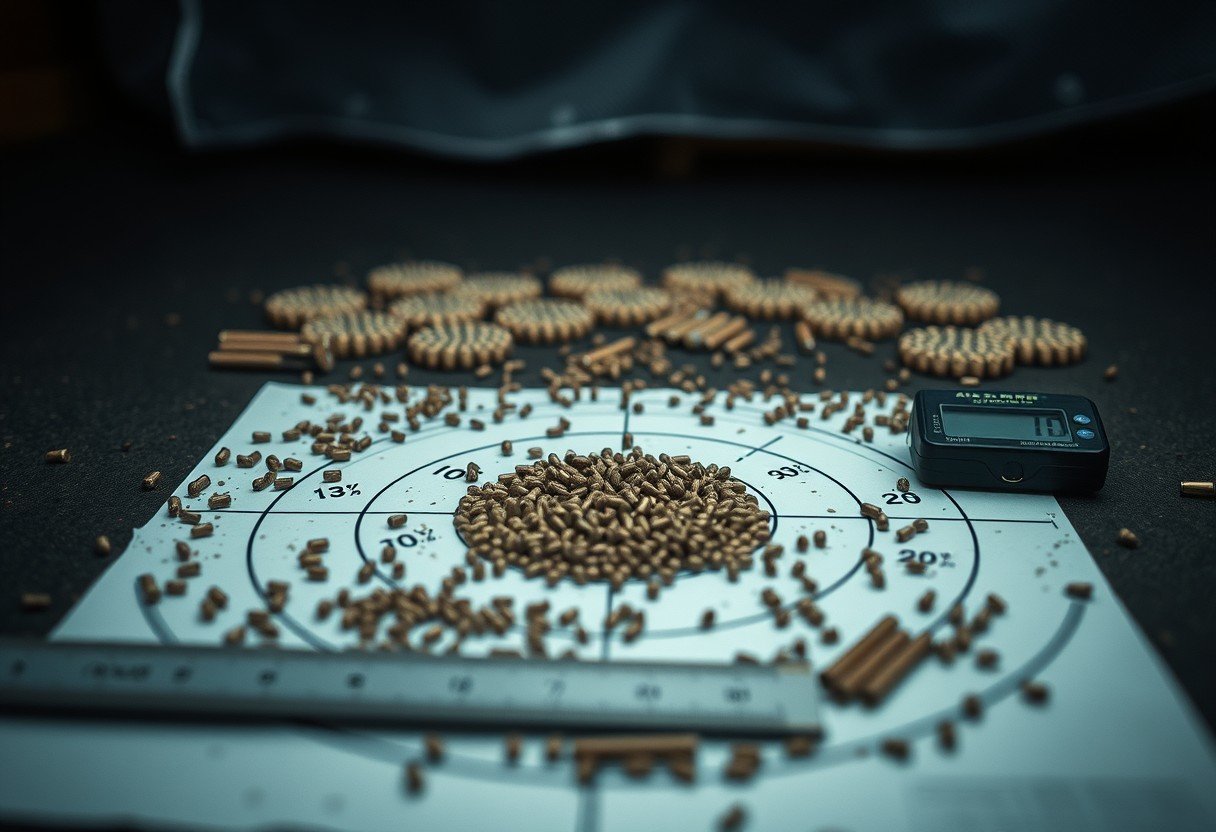Patterning a shotgun shows how many pellets hit a 30 inch circle at 40 yards, where you test your gun, choke, and load. Hunters and clay shooters do it before a season to see how well a setup works. You do it with paper targets and simple tools to learn how and why pellets spread. The goal is a clean, repeatable pattern that fits your game and distance.
What Is A Good Pellet Percentage In A 30 Inch Circle
The classic benchmark is measured at 40 yards on a 30 inch circle. Most field loads that put 60 to 70 percent of pellets in the circle are considered effective for general hunting. This gives a strong core and even edge hits.
These numbers match long used choke standards for lead shot. If your pattern is much lower than 60 percent, your spread may be too thin at that range. If your pattern is very tight, you may miss close birds.
Think about the target. Small upland birds need an even pattern, while larger waterfowl can use a firmer core. For close cover or skeet, a wider pattern is safer and more forgiving.
Set Your Goal By Game And Distance
Your best shotgun pattern percentage changes with species and where you hunt. At 25 to 35 yards, a 50 to 60 percent pattern can be fine for quail or grouse. At 35 to 45 yards, many duck and pheasant hunters aim for 60 to 70 percent.
Turkey is different. Many turkey hunters test a 10 inch circle at 40 yards and want a heavy center. The common goal is at least 100 hits in a 10 inch circle at your max range with dense, even coverage to the edge.
If most of your shots are inside 25 yards, choose a more open setup so you do not shoot holes in the pattern. If you often shoot past 40 yards, tighten the choke and use a load with enough pellet count and energy.
What Choke Does To The Pattern
Choke controls how tight pellets group at distance. Classic lead shot standards link choke names to the percent of pellets in a 30 inch circle at 40 yards. Use this as a starting point, then verify on paper with your load.
| Choke | Expected Percent At 40 Yards | Typical Use |
|---|---|---|
| Cylinder | About 40 percent | Very close shots, skeet station 1 and 7 |
| Improved Cylinder | About 50 percent | Upland over dogs, skeet |
| Modified | About 60 percent | General hunting, sporting clays |
| Full | About 70 percent | Longer shots, tight patterns |
Steel and hard non toxic shot can pattern tighter than lead in the same choke. Many makers suggest using one choke more open with steel to get a similar spread. Always check your barrel and choke are rated for the shot type.
Key Factors That Change Pellet Spread
Many small things change pattern density and evenness. The two biggest are shot material and wad design. Heavier than lead shot types often hold tighter cores, while soft lead may spread more evenly with the right wad.
- Load specs matter. Shot size, pellet count, and velocity change both pattern and penetration at 40 yards.
- Gun fit and aim point affect where the core lands. A gun that shoots high or low wastes pellets off the circle.
- Wind, temperature, and even barrel cleanliness can shift the pattern slightly on target day.
Choose the load that gives the most even coverage with no big holes. A smooth, even pattern beats a tight but patchy pattern for most hunting. Keep notes so you can repeat good results later.
How To Pattern Your Shotgun At 40 Yards
Use a safe range, big paper, and a steady rest. Shoot one shot per sheet so you can count clean holes. Aim at the center and keep your cheek weld the same each time.
- Measure a true 40 yards from muzzle to target and mark a bold center dot.
- Fire one shot from a solid rest with your chosen choke and load.
- Find the densest area, draw a 30 inch circle around the best center of impact.
- Count pellet hits inside the circle and divide by total pellet count in the shell to get percent.
- Repeat 3 to 5 times, then average the results for a real number.
- Note pattern evenness and any empty zones, not just the percent.
- Change one thing at a time and test again until you hit your goal.
A minimum of 3 shots per setup gives a more honest pattern percent. Small sample sizes can fool you, so average several sheets before you decide.
Read And Adjust After Each Target
Do not chase a single high or low sheet. Look for trends. If the core is off center, adjust sights or try a different point of aim. If you see big gaps, try another choke or load.
If your pattern is too tight for your typical range, open the choke or lower velocity to soften the core. If it is too thin, increase pellet count or step to a tighter choke. Balance density with even spread so edges still carry pellets.
Change only one variable at a time. That way you know what fixed the problem. Keep targets, photos, and notes with date, temperature, and wind so you can repeat the best setup next season.
Common Myths And What Matters
Myth one says the tightest pattern always wins. Not true. A very tight core can miss fast crossers at short range. Myth two says all guns of the same model shoot the same. Also not true. Every barrel, choke, and load combo is unique.
What matters most is even coverage where you aim at the ranges you shoot. For many field uses, 60 to 70 percent in a 30 inch circle at 40 yards is a proven sweet spot. For turkey, focus on dense hits in a 10 inch circle at your max ethical range.
Spend more time on smooth gun mount and follow through. Good form places that pattern on target and turns paper wins into clean harvests.
Quick Safety And Ethics Notes
Use eye and ear protection, a safe backstop, and follow all range rules. Check that your choke and barrel are approved for steel or hard shot if you use them.
Patterning helps you pick an ethical range. If your setup drops below your target percent at a given distance, shorten your shots. Clean hits and quick recoveries come from honest limits and tested gear.
Retest when you change loads, chokes, or when a new season starts. Temperature shifts and new lots of ammo can move results a little.
FAQs
What pellet percentage should I aim for at 40 yards?
For most hunting, aim for 60 to 70 percent of pellets inside a 30 inch circle at 40 yards. This balance gives strong center hits and useful edge coverage.
How many shots do I need to confirm a pattern?
Shoot at least 3 targets per setup and average the results. More targets reduce the chance that a single lucky or bad sheet misleads you.
Do steel and lead pattern the same in the same choke?
Often steel patterns tighter than lead in the same choke. Many makers suggest opening the choke one step with steel to get a similar spread, but always test your exact load.
What distance should I use for pattern testing?
Use 40 yards for standard 30 inch circle tests, since that is the long used benchmark. Also test at the ranges you most often shoot to see real field performance.
How do I know if my pattern is too tight?
If many close shots miss or targets show a tiny dense core with thin edges, you may be too tight. Open the choke or change loads to add even edge coverage.
What is different for turkey patterning?
Turkey hunters often judge a 10 inch circle at 40 yards and want very high center density. Many aim for at least 100 hits in that circle with even spread and no big holes.
Why does my pattern hit high or low on paper?
Your gun may shoot to a point of impact that does not match your sight picture. Adjust sights, shim the stock, or change your mount so the pattern centers on your aim.









Leave a Comment